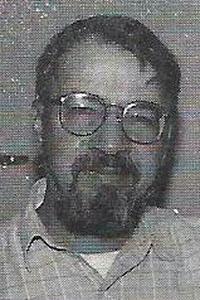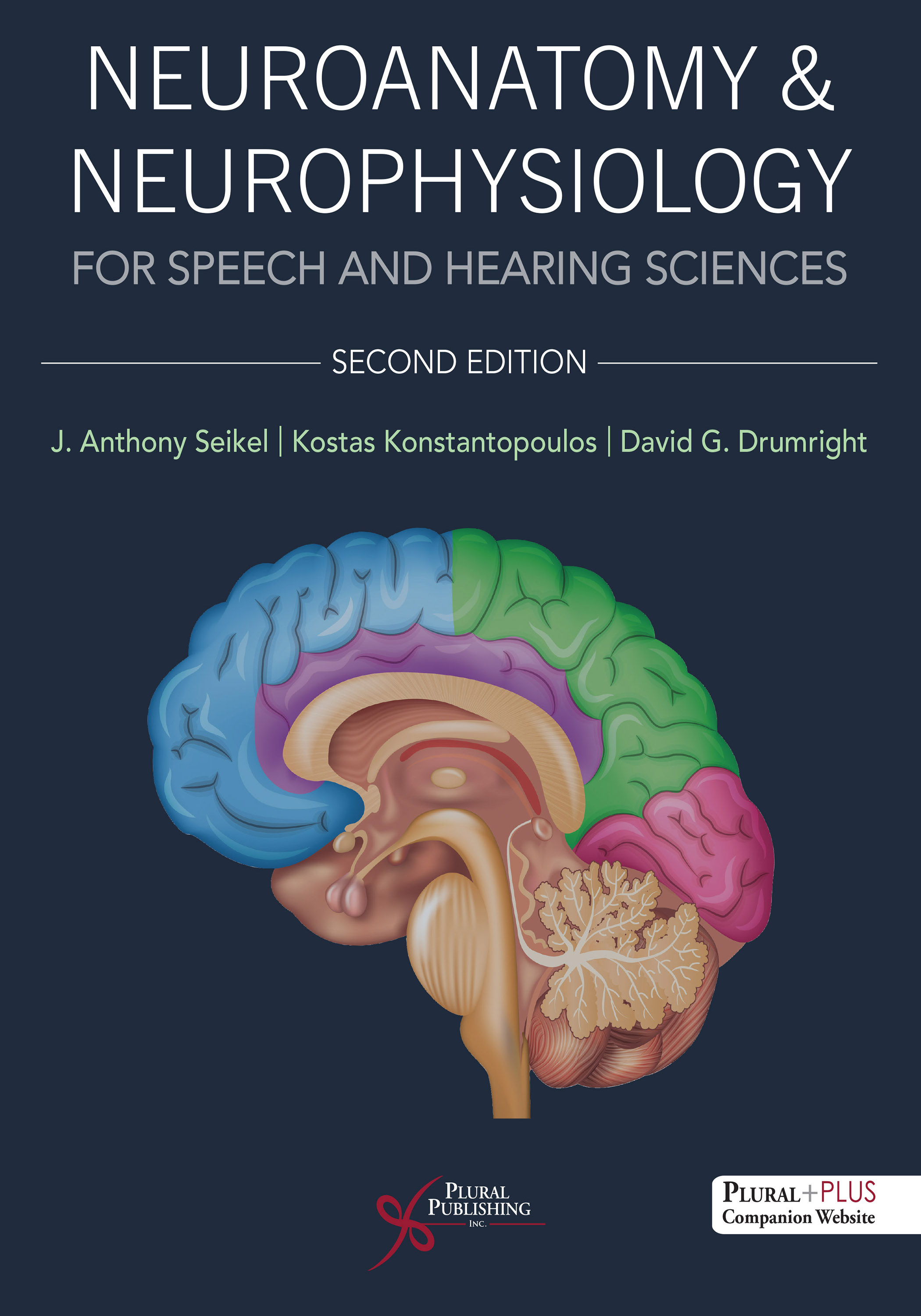
Neuroanatomy and Neurophysiology for Speech and Hearing Sciences
Second Edition
J. Anthony Seikel, Kostas Konstantopoulos, David G. Drumright
Details: 543 pages, Full Color, Hardcover, 8.5" x 11"
ISBN13: 978-1-63550-840-6
© 2027 | Coming Soon
Release Date: 10/10/2025
For Instructors
Purchase
For undergraduate or graduate courses, Neuroanatomy and Neurophysiology for Speech and Hearing Sciences, Second Edition provides a thorough yet readable examination of the neuroanatomical underpinnings within communication sciences and disorders. Each chapter begins with clear learning outcomes and a concise overview that sets the context, helping students understand the relevance and importance of the material. Additionally, each chapter ends with a number of clinical cases intended to prime the student’s problem-solving clinical skills in their future profession. The text comes with the Neuroquest study software that includes visual and interactive lessons. Use of quizzes and testing helps the student review the content, solidifying the concepts from the text.
After an introduction to the field and to anatomical concepts, the text takes the student from discussion of neurons and other basic components to examination of basic reflexes and sensorimotor integration. The following chapters focus on the cerebral cortex and its function, particularly as related to neurophysiology of speech and hearing. The next section of the text discusses subcortical structures, the brainstem, cranial nerves, cerebellum, and pathways. The subsequent chapters include discussion of neural control of speech and swallowing and the anatomy and physiology of hearing. The chapter on prenatal and postnatal development and aging of the brain and hearing mechanism explores the neurophysiological elements that contribute to changes in speech and hearing that are seen throughout the lifetime. The final chapter examines large brain networks and neural plasticity of the systems of speech, language, and hearing.
New to the Second Edition
- New original artwork presented in full-color
- A chapter dedicated to the auditory mechanism and auditory pathways
- A chapter discussing prenatal and postnatal development of the brain and auditory mechanisms, as well as effects of aging on these systems
- A chapter that examines large brain networks and neural plasticity as related to speech, language, and hearing
- New Neuroquest lessons illustrating the concepts of development and aging, auditory physiology, and large brain networks
- New illustrative case studies
Key Features
- More than 92 tables that provide succinct depth and detail to the content
- 29 neurological fully-annotated case studies with SLP diagnostic information, as well as 6 cases from neurosurgeons that include MRI and/or video
- 59 boxed notes give informative and fascinating support to the content, including focus on neuroscience as it relates to speech-language pathology and audiology
- Coverage of the neurophysiology of swallowing
- Detailed discussion of auditory pathway and signal analysis
- Clearly written with abundant supporting citations
- Key terms are highlighted throughout the text and included in a glossary
- Listing of abbreviations for each chapter
PluralPlus Online Ancillaries
For instructors: PowerPoint Slides, Image Bank, Neuroquest Software Program
For students: Test Bank, Quizzes, Neuroquest Software Program
Contents
Preface
Acknowledgments
Contributors
Reviewers
About the Authors
Chapter 1. Introduction and Overview
Overview of the Nervous System
Divisions of the Nervous System
Autonomic Nervous System
Somatic Nervous System
Terminology Related to Neuroanatomy and Neurophysiology
Terms of Movement
Terms of Neuropathology in Audiology
Terms of Neuropathology in Speech-Language Pathology
Chapter Summary
Case Study 1–1
Case Study 1–2
References
Chapter 2. Neurons and Glial Cells
Introduction
Neurons
Cellular Components of the Soma
Gross Structure of the Neuron
Soma
Dendrites
Axons
Neuronal Cell Types
Classification Based on Number of Dendrites
Classification Based on Dendrite Arborization
Classification Based on Axon Length
Classification Based on Conduction Velocity
Classification Based on Functional Connection
Glial Cells
Oligodendrocytes and Schwann Cells
Radial Glia
Satellite Cells and Enteric Glial Cells
Ependymal Cells
Action Potential
The Physical Synapse
Stimulation of a Neuron
Generating the Action Potential
Ion Channels and Gradients
Resting State
Stimulation
Generation of the Action Potential
Propagation
Communication Across the Synapse
Excitation and Inhibition
Summation
Neurotransmitters
Chapter Summary
Case Study 2–1
References
Chapter 3. Basic Reflex and Sensory Function: How We Know the World
Introduction
The Spinal Reflex Arc
Golgi Tendon Organs
Other Sensation and Sensors
Somatosensors
Representation of the Somatic Sensation in the Spinal Cord
Special Senses
Visual Sensation
Olfactory Sensation
Gustatory Sensation
Auditory Sensation
Vestibular Sensors
Chapter Summary
References
Chapter 4. Cerebral Cortex
Introduction
General Structures and Landmarks of the Cerebral Cortex
Major Sulci and Fissures
Meningeal Linings
The Ventricles and Cerebrospinal Fluid
Circulation of CSF
Cell Types of the Cerebral Cortex
Layers of the Cerebral Cortex
Lobes of the Cerebral Cortex
Frontal Lobe
Parietal Lobe
Temporal Lobe
Occipital Lobe
Operculum and Insular Cortex
Medial Surface of the Cerebral Cortex
Inferior Surface of the Cerebral Cortex
Posterior-Inferior (Ventral) Cerebral Cortex
Anterior-Inferior Cerebral Cortex
Myelinated Fibers
Projection Fibers
Corticobulbar and Corticospinal Tracts
Corticobulbar Tract
Corticospinal Tract
Association Fibers
Commissural Fibers
The Other Half: Hemispheric Specialization
Chapter Summary
Case Study 4–1
Case Study 4–2
Case Study 4¬–3
Case Study 4¬–4
References
Chapter 5. Anatomy of the Subcortex
Introduction
Basal Ganglia
Limbic System
Diencephalon
Thalamus
Epithalamus
Subthalamus
Hypothalamus
Chapter Summary
Case Study 5–1
Case Study 5–2
Case Study 5–3
References
Chapter 6. Anatomy of the Brainstem
Introduction
Superficial Brainstem Landmarks
Superficial Medulla Oblongata
Superficial Pons
Superficial Midbrain
Deep Structures of the Brainstem
Deep Structures of the Medulla Oblongata
Deep Structures of the Pons
Deep Structures of the Midbrain
Chapter Summary
Case Study 6–1
References
Chapter 7. The Cranial Nerves
Introduction
Cranial Nerve Classification
General Somatic Afferent Nerves
Special Somatic Afferent Nerves
General Visceral Afferent Nerves
Special Visceral Afferent Nerves
General Visceral Efferent Nerves
General Somatic Efferent Nerves
Specific Cranial Nerves
I Olfactory Nerve (SVA)
II Optic Nerve (SSA)
Eye Movement: III Oculomotor Nerve (GSE, GVE), IV Trochlear Nerve (GSE), and VI Abducens Nerve (GSE)
V Trigeminal Nerve (GSA, SVE)
VII Facial Nerve (SVE, SVA, GVE)
VIII Vestibulocochlear Nerve (SSA)
Acoustic Branch
Vestibular Branch
Efferent Component
IX Glossopharyngeal Nerve (GSA, GVA, SVA, GVE, SVE)
X Vagus Nerve (GSA, GVA, SVA, GVE, SVE)
XI Accessory Nerve (SVE)
XII Hypoglossal Nerve (GSE)
Chapter Summary
Case Study 7–1
References
Chapter 8. Cerebellar Anatomy and Physiology
Introduction
Structure of the Cerebellum
Cellular Structure of the Cerebellum
Nuclei of the Cerebellum
Fastigial Nucleus
Globose and Emboliform Nuclei
Dentate Nucleus
Tracts Serving the Cerebellum
Input to the Cerebellum
Vestibulocerebellar Pathways
Dorsal Spinocerebellar Tract
Cuneocerebellar Tract
Ventral Spinocerebellar Tract
Rostral Spinocerebellar Tract
Pontocerebellar Tract
Olivocerebellar Tract
Cerebellar Peduncles
Superior Cerebellar Peduncle
Middle Cerebellar Peduncle
Inferior Cerebellar Peduncle
Cerebellum and Motor Control
Chapter Summary
Case Study 8–1
Case Study 8–2
Case Study 8–3
Case Study 8–4
References
Chapter 9. Spinal Cord and Pathways
Introduction
Vertical Anatomy of the Spinal Cord
Transverse Anatomy of the Spinal Cord
Pathways of the Spinal Cord
Ascending Pathways
Posterior Funiculus: Fasciculus Gracilis and Fasciculus Cuneatus
Anterior Funiculus: Anterior and Lateral Spinothalamic Tracts
Lateral Funiculus
Anterior and Posterior Spinocerebellar Tracts
Descending Pathways
Pyramidal Pathways
Corticospinal Tract
Corticobulbar Tract
Other Descending Pathways
Extrapyramidal System
Tectospinal Tract
Rubrospinal Tract
Vestibulospinal Tract
Pontine and Medullary Reticulospinal Tracts
Corticostriate Pathway
Corticothalamic Fibers
Corticopontocerebellar Fibers
Chapter Summary
Case Study 9–1
Case Study 9–2
References
Chapter 10. Cerebrovascular Supply
Introduction
Carotid Artery Supply
External Carotid Artery Supply
Internal Carotid Artery Supply
Anterior Cerebral Artery
Posterior Communicating Artery
Middle Cerebral Artery
Vertebrobasilar System
Vertebral and Basilar Arteries
Posterior Cerebral Artery
Venous Drainage of the Cerebrovascular Supply
Chapter Summary
Case Study 10–1
References
Chapter 11. Neural Control of Speech and Swallowing
Introduction
Neural Control of Speech
Feedback and Correction
Models of Speech Production
Neural Control of Mastication and Deglutition
Development of the Swallowing Function
Adult Patterns of Mastication and Deglutition
Oral Stage
Pharyngeal Stage
Relaxation of the Upper Esophageal Sphincter
Esophageal Stage
Reflexes and Their Integration Into Central Pattern Generators
Oral Stage Reflexes
Orienting, Rooting, and Sucking
Chewing Reflex
Pharyngeal Stage Reflexes
Palatal Reflex and Gag Reflex
Vomiting Reflexes
Cough Reflex
Reflexes of Respiration and Apnea
Sensation in Mastication and Deglutition
Sensation
Gustation
Olfaction
Tactile, Proprioceptive, and Thermal Sensation
Complex Motor Responses
Chapter Summary
Case Study 11–1
Case Study 11–2
Case Study 11–3
Case Study 11–4
References
Chapter 12. Hearing and Vestibular Function
Introduction
Outer and Middle Ear
Inner Ear
Osseous and Membranous Labyrinths of the Cochlea
Osseous Labyrinth
Membranous Vestibular Labyrinth
Membranous Cochlear Labyrinth
Cochlear Duct (Scala Media)
Organ of Corti
Hair Cells
Innervation Pattern of the Organ of Corti
Efferent Cochlear Innervation
Auditory Mechanism: Electrical Events
Depolarization of the Hair Cell
VIII Nerve Potentials
Resting Potentials
Evoked Potentials
VIII Nerve Responses and Poststimulus Time Histograms
Auditory Afferent and Efferent Pathways
Cochlear Nucleus
Superior Olivary Complex
Inferior Colliculus
Lateral Lemniscus
Medial Geniculate Body
Auditory Reception at Cerebral Cortex
Core
Belt
Parabelt
Highest Level Processing
Efferent Pathways
Vestibular Pathway
Acoustic Reflex
Chapter Summary
Case Study 12–1
References
Chapter 13. Brain and Auditory Changes Across the Life Span
Introduction
Genetics
Terminology Related to Neuroanatomy and Neurophysiology
Embryonic and Fetal Development
Postnatal Development and Aging of the Brain
Cortical Growth
Gray Matter
Cortical Thickness
Cerebral Volume
Total Surface Area
Volume of Ventricles
Synaptic Growth and Development
Number of Synapses
Changes in Synaptic Density
The Process of Synaptic Pruning
Postnatal Programmed Cell Death (Apoptosis)
Subcortical Growth and Development
Cerebellum Growth and Development
Brainstem Growth and Postnatal Development
Myelin Development
Subcortical Myelin Development
Cortical Myelin
Aging and the Brain
Changes in Cortical and White Gray Matter
Cortical Thickness, Brain Weight, and Neuron Loss
Cortical Volume
White Matter and Synapse Changes
Subcortical Changes
Brainstem and Cerebellum Changes
Limbic System Changes
Cognitive and Functional Decline
Growth, Development, and Aging of the Hearing Mechanism
Prenatal Development
Outer and Middle Ear Development
Development of the Inner Ear
Postnatal Development of the Peripheral Auditory System
Outer and Middle Ear
Postnatal Development of the Inner Ear
Auditory Acuity Development
The Aging Auditory Mechanism
Outer Ear
Changes in Ossicular Chain, Tympanic Membrane, and Auditory Tube
Metabolic and Sensorineural Presbycusis: The Inner Ear and Aging
Presbycusis Involving the Basilar Membrane, Outer Hair Cells, and the Organ of Corti
Changes to the Stria Vascularis Through Aging
Age-Related Changes to the VIII Vestibulocochlear Nerve and Brainstem Pathways
Chapter Summary
Case Study 13–1
Case Study 13–2
References
Chapter 14. Beyond Brodmann: Large Brain Networks
Introduction
Methodologies in Brain Network Research
Definitions
Networks
Resting State Networks
Task-Related Networks
Identified Resting State Networks
Default Mode Network (Medial Frontoparietal Network)
Default Mode Network Function
Anatomy
Salience Network (Midcingulo-Insular Network)
Salience Network Function
Anatomy
Central Executive Network (Control Network; Lateral Frontoparietal)
Anatomy
Central Executive Network Function
Task-Related Networks
Language Network and Multiple Demand Network
Anatomy
Language Network Function
Auditory Network
Anatomy
Auditory Network Function
Dorsal Attention Network (Frontoparietal Network)
Anatomy
Dorsal Attention Network Function
Other Task-Related Networks
Pathologies Examined Through Large Brain Networks
Neural Plasticity and Brain Networks
Chapter Summary
Case Study 14–1
Case Study 14–2
Case Study 14–3
Case Study 14–4
References
Appendix: Answers to Study Questions
Glossary
Index
Neuroanatomy and Neurophysiology for Speech and Hearing Sciences, Second Edition comes with access to supplementary student and instructor resources on a PluralPlus companion website.
The companion website is located at: https://www.pluralpublishing.com/publication/nnshs2e
STUDENTS:
The student resources include Test Bank, Quizzes, and the Neuroquest Software Program.
To access the student resources, you must register on the companion website and log in using the access code located in the front of your textbook.
INSTRUCTORS:
The instructor resources include PowerPoint Slides, Image Bank, and the Neuroquest Software Program. You will also have access to all of the student resources listed above.
To access the instructor resources, you must contact Plural Publishing, Inc. to be verified as an instructor and receive your access code.
Email: instructormaterials@pluralpublishing.com
Tel: 866-758-7251 (toll free) or 858-492-1555
*Note for students: If you have purchased this textbook used or have rented it, your access code will not work if it was already redeemed by the original buyer of the book. Plural Publishing does not offer replacement access codes for used or rented textbooks.
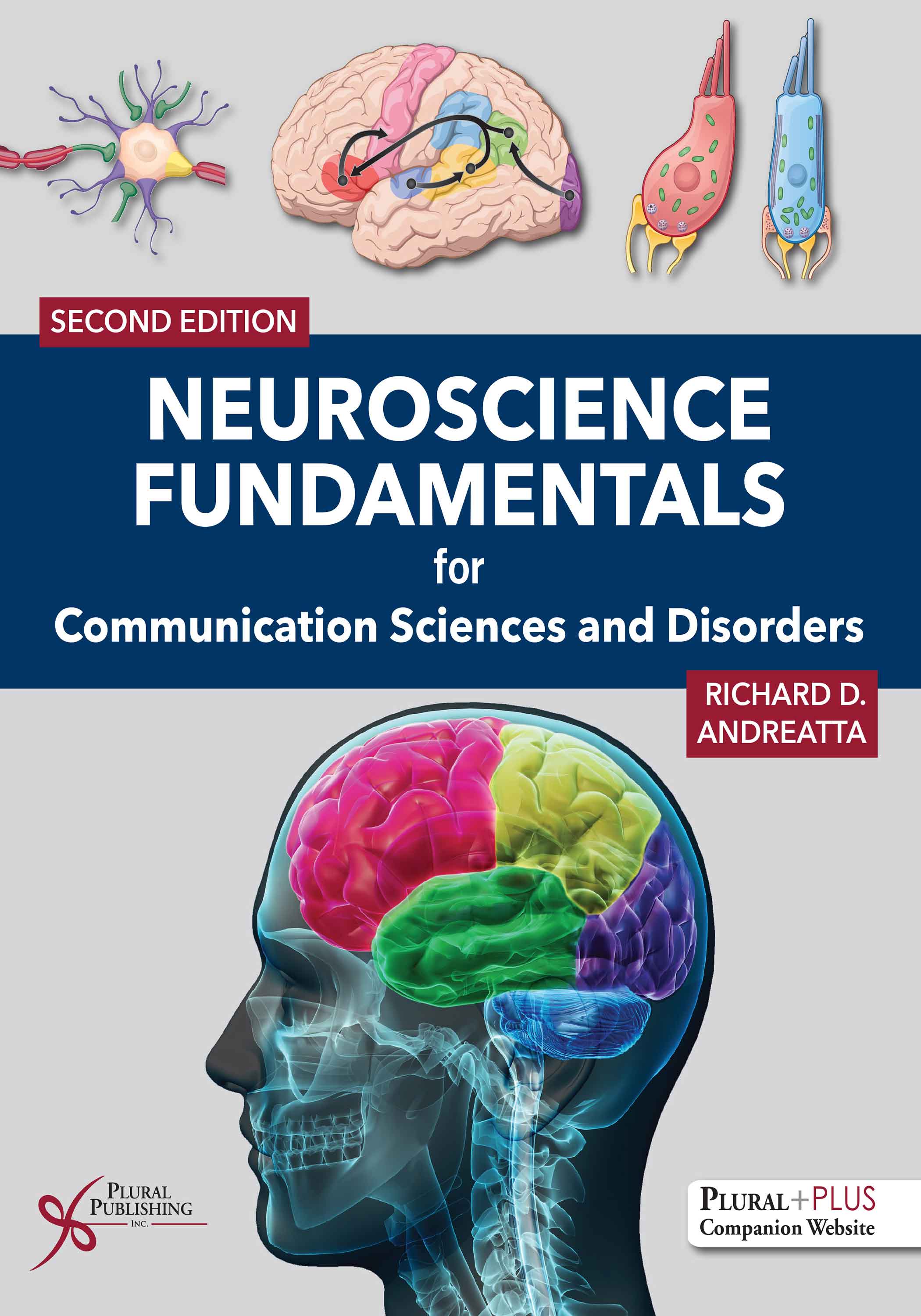
Neuroscience Fundamentals for Communication Sciences and Disorders
Second Edition
Richard D. Andreatta
Details: 802 pages, Full Color, Hardcover, 8.5" x 11"
ISBN13: 978-1-63550-359-3
© 2024 | Available
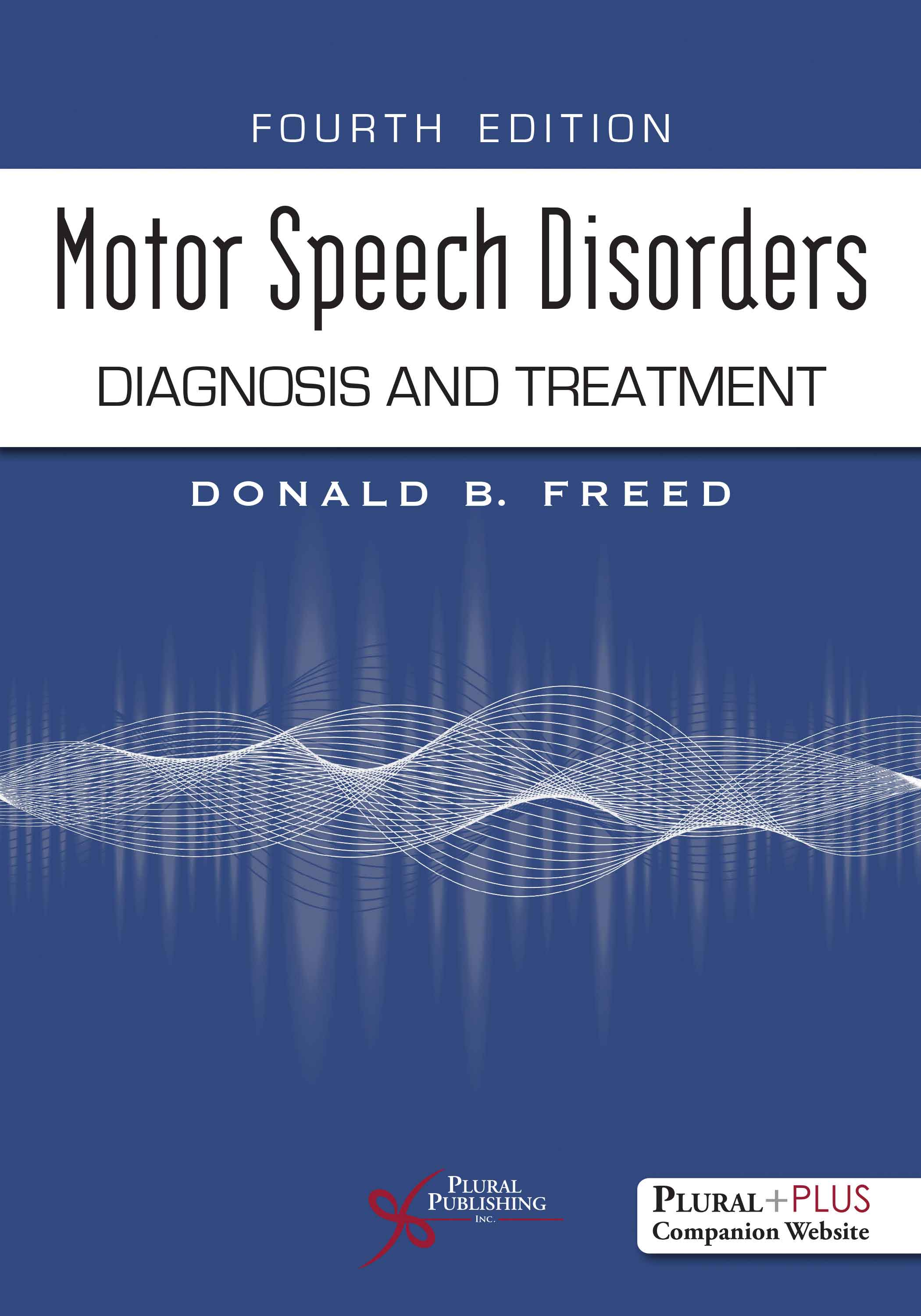
Motor Speech Disorders: Diagnosis and Treatment
Fourth Edition
Donald B. Freed
Details: 381 pages, Full Color, Soft Cover, 7" x 10"
ISBN13: 978-1-63550-607-5
© 2025 | Available
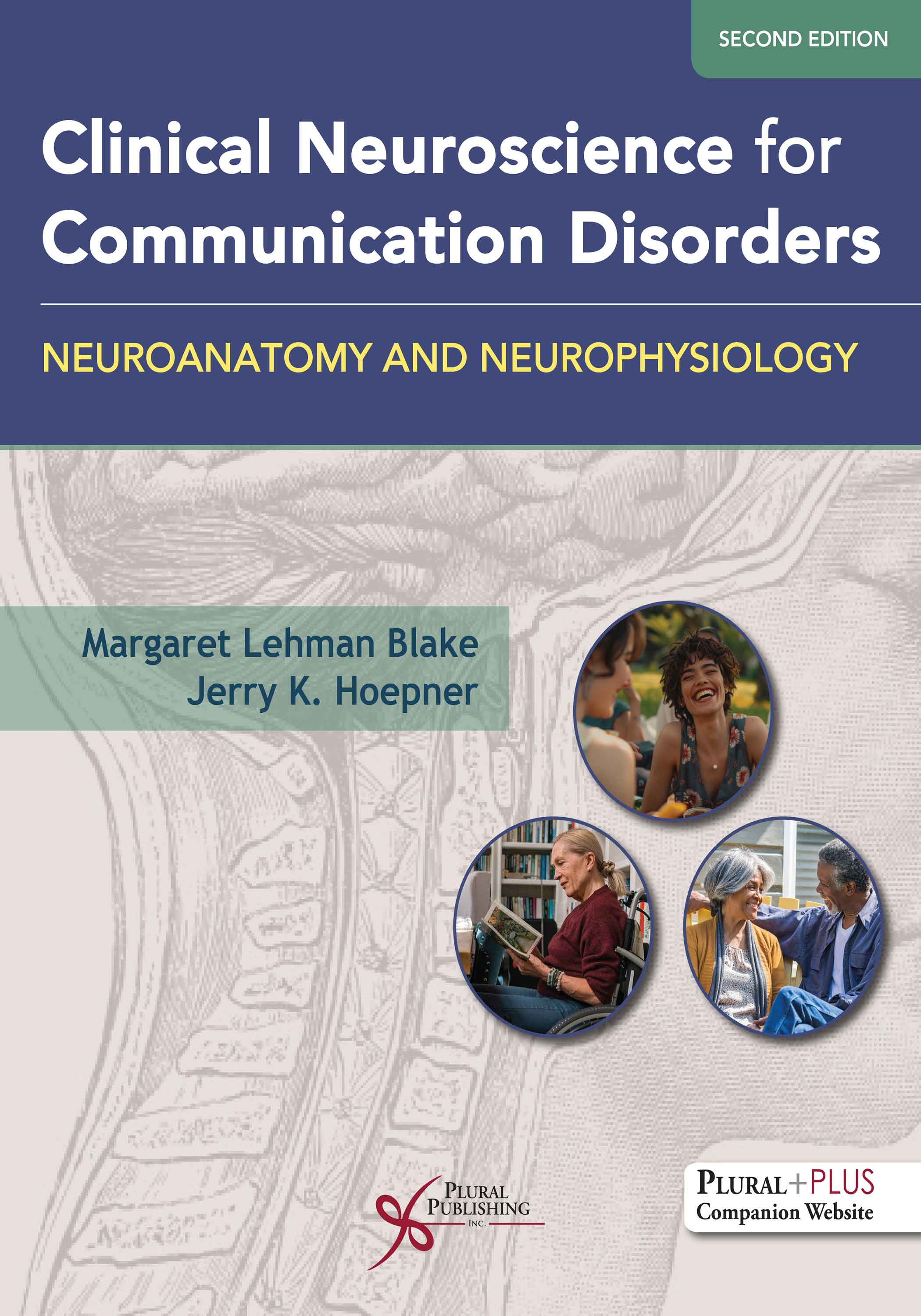
Clinical Neuroscience for Communication Disorders: Neuroanatomy and Neurophysiology
Second Edition
Margaret Lehman Blake, Jerry K. Hoepner
Details: 384 pages, Full Color, Hardcover, 8.5" x 11"
ISBN13: 978-1-63550-781-2
© 2027 | Coming Soon
Release Date: 10/15/2025



